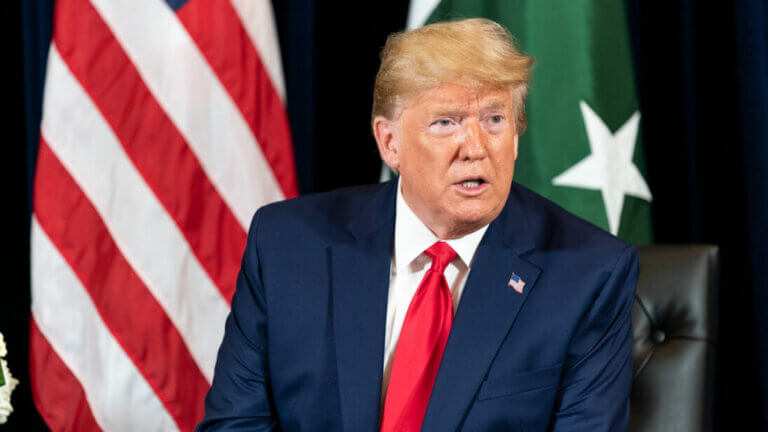Trump’s Focus on Pakistan’s Mineral Resources (2025)
Strategic Deals, Motivations, and Challenges
Introduction
In 2025, President Donald Trump’s administration has prioritized Pakistan’s $8 trillion mineral reserves—copper, gold, lithium, and rare earths—as part of a strategy to secure critical minerals for U.S. technology and defense, countering China’s 92% control of rare earth processing. Centered in Balochistan and Khyber Pakhtunkhwa, these resources have spurred trade deals, tariff negotiations, and a $500 million investment, despite security and human rights concerns. This webpage analyzes Trump’s initiatives, key developments, motivations, and challenges as of September 2025.[1][2]
Key Developments and Deals
Initial Diplomatic Overtures (April 2025)
U.S. officials, including Eric Meyer, attended Pakistan’s Minerals Investment Forum, signaling interest in its reserves, notably Reko Diq’s copper-gold deposits. PM Shehbaz Sharif pushed for local processing, rejecting raw exports.[1]
Trade and Tariff Negotiations (July–August 2025)
Pakistan faced 29% U.S. tariffs, later reduced to 19%, prompting a July trade deal expanding cooperation in minerals, IT, and energy. Trump’s claim of “massive oil reserves” drew skepticism, as Pakistan’s oil output is only ~70,000 b/d.[13][8]
High-Level Engagements
Pakistan’s Army Chief Syed Asim Munir’s Washington visit included a White House lunch with Trump and CENTCOM talks on minerals and counterterrorism. The U.S. designated the Balochistan Liberation Army (BLA) a terrorist group to bolster investor confidence.[6]
MoU Signing (September 8, 2025)
A $500 million MoU between U.S. Strategic Metals and Pakistan’s Frontier Works Organization targets mineral exploration and a poly-metallic refinery in Balochistan, alongside a deal with Portugal’s Mota-Engil Group.[5]
Strategic Motivations
- Countering China: Pakistan’s reserves, including Reko Diq’s 5th-largest copper-gold deposits, offer an alternative to China’s rare earth dominance via CPEC projects.[2][3]
- Geopolitical Leverage: Pakistan’s mineral and crypto pitches secured tariff relief and $397M in U.S. aid for F-16s, positioning it as a counterweight to India and China.[3]
- Counterterrorism: U.S. praise for Pakistan’s anti-terror efforts, including an ISIS leader’s arrest, aligns with investment security.[6]
Challenges and Criticisms
Security Risks
Balochistan’s BLA insurgency, with 119% more attacks in 2024, targets mining projects, risking U.S. investments. Chinese CPEC projects have stalled due to similar violence.[2]
Human Rights Concerns
Baloch activists decry military-led exploitation, citing displacement and pollution. Revenues may fund extremism, not development.[2]
Economic Realities
Minerals contribute <2% to Pakistan’s GDP, with infrastructure gaps and corruption hindering progress. Oil claims are exaggerated, as 80% of petroleum is imported.[13]
Indian Concerns
New Delhi sees the deals as U.S. leverage amid 50% tariffs on India for Russian oil purchases, with Trump eyeing mineral exports to India.[15][6]
Conclusion
Trump’s 2025 focus on Pakistan’s $8 trillion mineral reserves reflects a strategic push to secure critical resources, counter China, and leverage geopolitics. The $500 million MoU with U.S. Strategic Metals and tariff reductions mark progress, but insurgency, human rights issues, and economic constraints pose risks. While Pakistan’s minerals offer potential, careful navigation of security and ethical concerns is crucial. Monitor U.S. State Department updates (https://www.state.gov) for developments.[5][2]
Sources
- After Ukraine, Trump Eyes Pakistan’s Minerals, The Independent
- U.S. Eyes Pakistan’s Mineral Wealth, Foreign Policy
- Pakistan Dangles Rare Earths to Woo Trump, MINING.COM
- U.S. and Pakistan Oil Deal, DW
- US Firm Agrees $500M Deal, Times-Standard
- Trump’s Love for Pakistan, Times of India
- US Firm $500M Deal, Akron News-Reporter
- Trump Says U.S. Will Help Pakistan Develop Oil, Washington Post
- US Firm $500M Deal, Mcall
- Trump Reveals Pakistan Trade Deal, Fox Business
- US Firm $500M Deal, Advocate-News
- Trump’s Energy Deal with Pakistan, Outlook Business
- Pakistan Wins US Tariff Deal, Reuters
- US Firm $500M Deal, Record-Bee
- Trump’s Pakistan Oil Deal, India Today
- Pakistan-US Trade Agreement, E&E News
- Trump’s Massive Oil Deal with Pakistan, Firstpost
- US-Pakistan Trade Deal, The Hindu
- US Firm $500M Deal, The Times-Tribune
- US Firm $500M Deal, Newsday
- US Firm $500M Deal, Main Line Media News
- US Firm $500M Deal, Standard-Speaker
- Pakistan Offers US Firms Concessions, Reuters
- US Wants Deeper Pakistan Trade Ties, Times of India
- X Post by @ItsShubhangi, August 27, 2025
